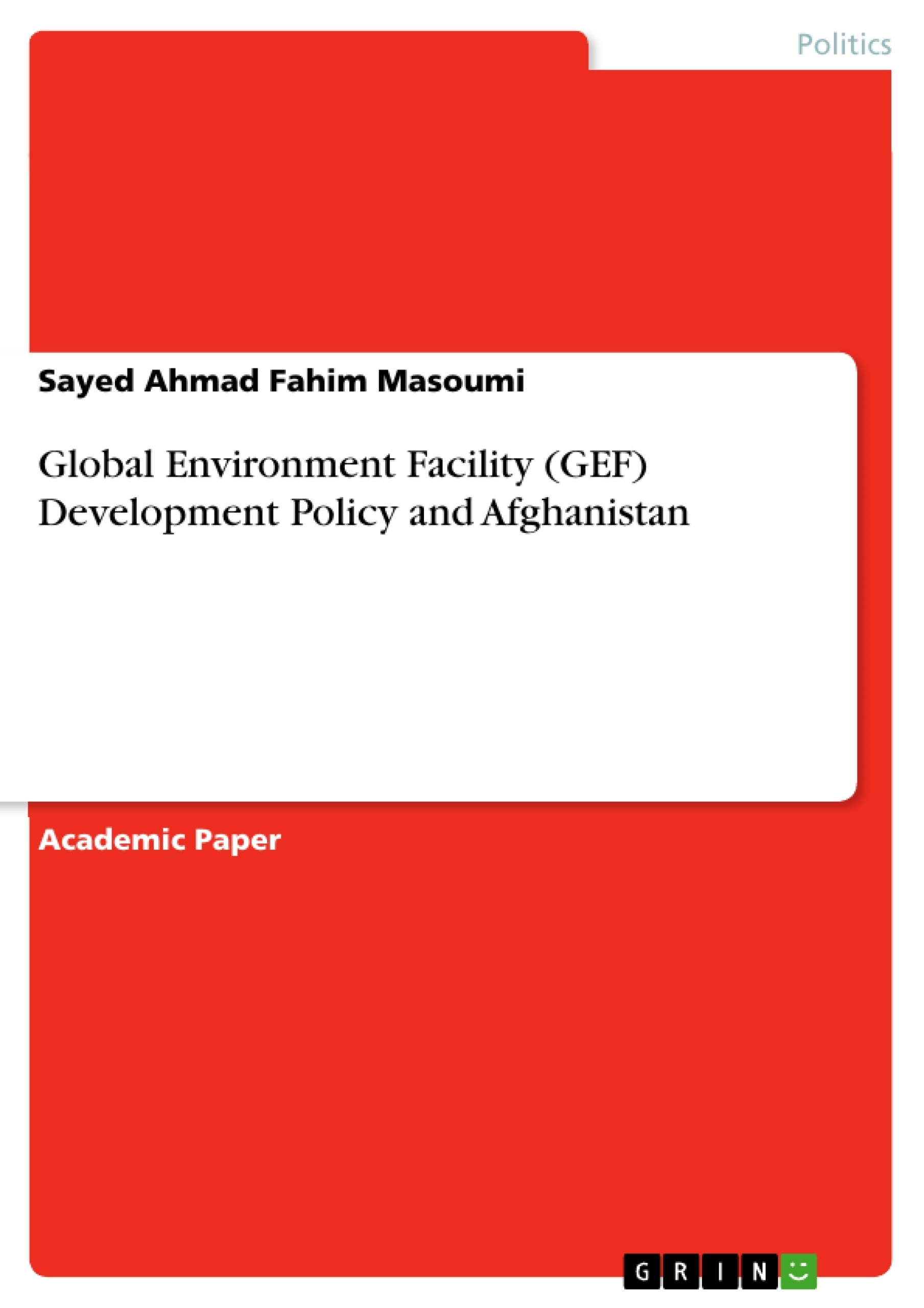The Global Environment Facility has been actively contributing to solving climate change and environmental issues since 1994. World Bank is its administrative institution, while major UN institutions act as its agencies that implement projects in the recipient country in collaboration with governments, NGOs, and civil society organizations. The GEF's major focal strategy areas are biodiversity, climate change, land degradation, international water, chemical, and waste.
Afghanistan came to the intervention area of GEF in 2002; various projects have been implemented on forest conservation, wildlife protection, water management, institutional capacity building, training human capital, sustainable agriculture, renewable energy, and climate-resilient communities. GEF has had a vital role in developing and implementing national strategies such as Afghanistan National Biodiversity Strategy and Action, the NCSA, and the NAPA.
Table of contents
1.1 Introduction
2.1 Historical Background
2.2 Organizational Background
3.1 The GEF Strategy
3.2 The GEF Focal Areas Strategy
3.3 Funding Mechanism
4.1 GEF and Afghanistan
4.2 GEF Interventions
Conclusions and Recommendations
References
- Quote paper
- Sayed Ahmad Fahim Masoumi (Author), 2022, Global Environment Facility (GEF) Development Policy and Afghanistan, Munich, GRIN Verlag, https://www.grin.com/document/1189634
-

-

-

-
Upload your own papers! Earn money and win an iPhone X. -

-
Upload your own papers! Earn money and win an iPhone X. -

-
Upload your own papers! Earn money and win an iPhone X. -

-
Upload your own papers! Earn money and win an iPhone X. -

-
Upload your own papers! Earn money and win an iPhone X. -

-
Upload your own papers! Earn money and win an iPhone X. -

-
Upload your own papers! Earn money and win an iPhone X. -

-
Upload your own papers! Earn money and win an iPhone X.

